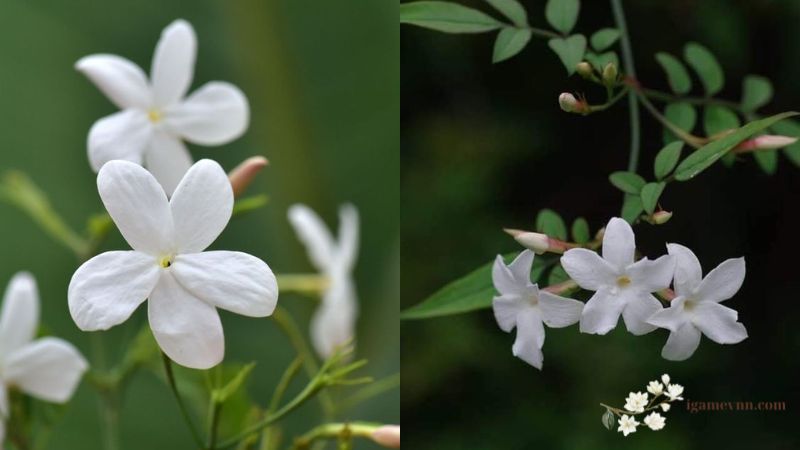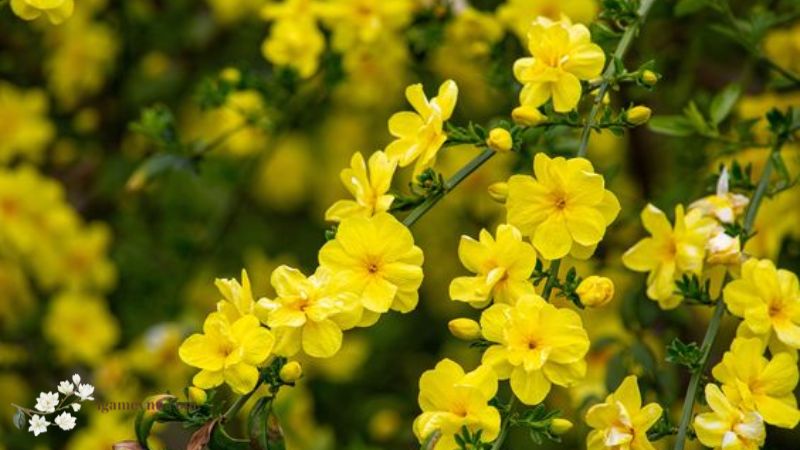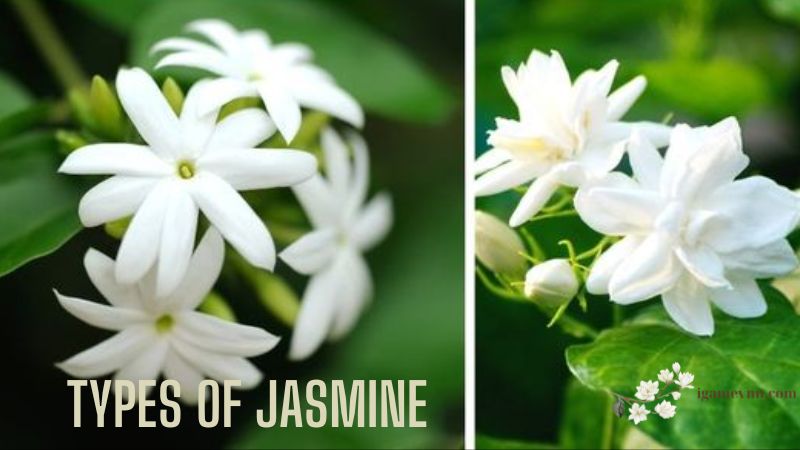Jasmine, renowned for its enchanting fragrance and delicate beauty, is a cherished flower found in gardens and perfumeries worldwide. With numerous species and varieties, the types of jasmine cater to diverse needs, from enhancing the aroma of perfumes to creating lush garden landscapes. This article from Igamevnn delves into the different types of jasmine, each with its unique characteristics and uses.
Table of Contents
ToggleThe Various Types of Jasmine
1. Common Jasmine (Jasminum officinale)
One of the most well-known types of jasmine is the Common Jasmine, scientifically known as Jasminum officinale. This variety, often referred to as poet’s jasmine, is celebrated for its classic white, star-shaped flowers that exude a sweet and intoxicating fragrance. Blooming during the summer and fall, the Common Jasmine’s aromatic qualities make it a favorite in the perfume industry. Its versatile nature also makes it a popular choice for gardeners looking to add a touch of elegance and fragrance to their outdoor spaces.

The Common Jasmine thrives in well-drained soil and prefers a sunny location, although it can tolerate partial shade. Its climbing or trailing growth habit allows it to be used effectively as a ground cover or as a climbing plant on trellises and arbors. The adaptability of Jasminum officinale makes it a staple in many gardens, providing not only beauty but also a delightful scent.
2. Arabian Jasmine (Jasminum sambac)
Another prominent type of jasmine is the Arabian Jasmine, or Jasminum sambac. Known for its robust and sweet fragrance, this variety produces white flowers that bloom throughout the year. The Arabian Jasmine holds significant cultural importance in various regions, serving as the national flower of the Philippines and Indonesia. Its fragrance is so potent that it is widely used in the production of jasmine tea, a popular beverage known for its soothing qualities.
The Arabian Jasmine’s evergreen nature means it maintains its foliage year-round, providing continuous beauty and fragrance. It grows well in warm climates and requires well-drained soil with regular watering. This variety can be grown as a shrub or a vine, making it a versatile choice for garden enthusiasts seeking a fragrant and ornamental plant.
3. Spanish Jasmine (Jasminum grandiflorum)
Spanish Jasmine, or Jasminum grandiflorum, is another type of jasmine celebrated for its large, white flowers and intense fragrance. Often referred to as Royal Jasmine or Catalan Jasmine, this variety blooms from summer to fall, making it a popular choice for those seeking a prolonged flowering period. The strong scent of Spanish Jasmine makes it a sought-after ingredient in the perfume industry, where its rich aroma adds depth to various fragrances.

The Spanish Jasmine prefers a sunny location and well-drained soil, similar to other types of jasmine. It can be grown as a climbing plant or shrub, and its vigorous growth makes it suitable for covering trellises, fences, and arbors. The striking appearance and potent fragrance of Jasminum grandiflorum make it a valuable addition to both residential and commercial landscapes.
4. Winter Jasmine (Jasminum nudiflorum)
Distinct from other types of jasmine is the Winter Jasmine, known scientifically as Jasminum nudiflorum. This variety is notable for its bright yellow flowers, which bloom during the winter and early spring. Unlike the white-flowered jasmine varieties, Winter Jasmine’s vibrant yellow blooms add a splash of color to gardens during the colder months, making it a popular choice for winter gardens.
Winter Jasmine is a hardy plant that can tolerate colder temperatures, making it suitable for regions with harsh winters. It prefers a sunny location but can adapt to partial shade. This variety is often used as a ground cover or for cascading over walls and fences, adding a cheerful touch to winter landscapes.
5. Star Jasmine (Trachelospermum jasminoides)
Star Jasmine, also known as Confederate Jasmine (Trachelospermum jasminoides), is another type of jasmine that stands out for its star-shaped, white flowers. Blooming from late spring to early summer, Star Jasmine is valued for its sweet fragrance and attractive appearance. It is commonly used as a climbing plant, ideal for covering trellises, pergolas, and walls.
The Star Jasmine thrives in well-drained soil and prefers full sun to partial shade. Its glossy, evergreen foliage provides year-round interest, while its fragrant blooms make it a popular choice for enhancing the sensory experience of outdoor spaces. The versatility of Trachelospermum jasminoides allows it to be used in various garden designs, from formal to informal settings.
6. Primrose Jasmine (Jasminum mesnyi)
Primrose Jasmine, scientifically known as Jasminum mesnyi, is another type of jasmine that is appreciated for its bright yellow flowers. Blooming in late winter to early spring, Primrose Jasmine adds a burst of color to gardens during the early months of the year. Its mild fragrance and vibrant blooms make it an attractive choice for gardeners looking to brighten up their landscapes.

Primrose Jasmine is adaptable to different soil types and can grow in full sun to partial shade. Its sprawling growth habit makes it suitable for use as a ground cover or for cascading over walls and fences. The early blooming period and cheerful yellow flowers of Jasminum mesnyi make it a valuable addition to winter and spring gardens.
7. Italian Jasmine (Jasminum humile)
Italian Jasmine, or Jasminum humile, is a type of jasmine that is known for its clusters of bright yellow flowers. Blooming from spring to summer, this variety produces a mild fragrance that adds a subtle touch of elegance to gardens. Italian Jasmine is often used in landscaping for its decorative appeal and vibrant color.
This variety prefers well-drained soil and a sunny location, although it can tolerate partial shade. Its growth habit is generally upright and bushy, making it suitable for use as a shrub or as a backdrop in garden beds. The bright yellow blooms of Jasminum humile provide a striking contrast to other plants, making it a popular choice for adding visual interest to garden designs.
Conclusion
The types of jasmine offer a diverse range of options for gardeners, landscapers, and those interested in fragrance. From the classic white blooms of the Common Jasmine to the bright yellow flowers of the Italian Jasmine, each variety brings its own unique charm and qualities. Whether used for their aromatic properties in perfumes, their visual appeal in garden designs, or their cultural significance, the various types of jasmine continue to captivate and inspire.
Understanding the characteristics and needs of each type of jasmine allows for informed choices in planting and care, ensuring that these beautiful plants thrive and enhance their surroundings. Whether you’re looking to create a fragrant garden, add a splash of color to your landscape, or explore the aromatic world of jasmine, the diverse types of jasmine provide plenty of options to suit your needs.

